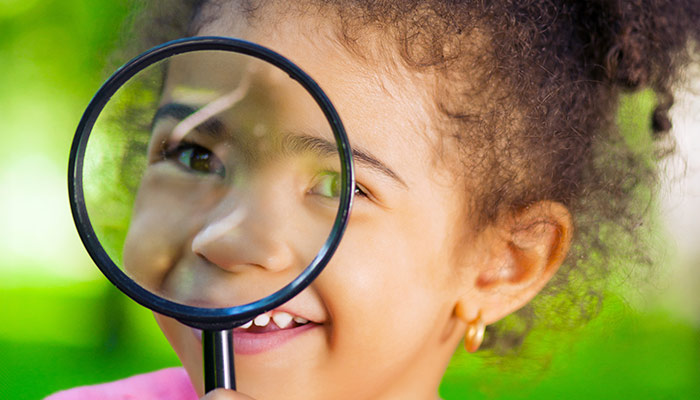While we believe that the books and resources recommended may be of value to you, keep in mind that these are suggestions only and you must do your own due diligence to determine whether the materials are appropriate and suitable for your use. PNC has no sponsorship or endorsement agreement with the authors or publishers of the materials listed.
ALL ABOUT ME

Close Up Me
Children will learn about their skin.

Lesson Objective
Children will learn about their skin by using a magnifying glass to examine it.
Science
What You'll Need
- Magnifying glasses – 1 per child
- Small plates – 1 per child
- Paint – 1 small puddle per child
What To Do
- Tell the children they will be using a magnifying glass to learn about themselves.
- Distribute magnifying glasses.
- Encourage the children to begin looking at their own hands and fingers through the magnifying glass (see Guiding Student Inquiry).
- Have the children turn to a partner and examine their hands and fingers to compare.
- Invite the children to look at their nails under the magnifying glass and describe what they see.
- Place a small puddle of paint on a plate for each child, and distribute.
- Invite the children to rub some paint on their hands, then examine them with the magnifying glasses.
Resources
Home School Resources
Home educators: use these printable lesson PDFs to teach this lesson to your home schoolers. They're available in English and Spanish.
Content Provided By
Common Core State Standards Initiative – These lessons are aligned with the Common Core State Standards ("CCSS"). The CCSS provide a consistent, clear understanding of the concepts and skills children are expected to learn and guide teachers to provide their students with opportunities to gain these important skills and foundational knowledge [1]. Visit the CCSS


